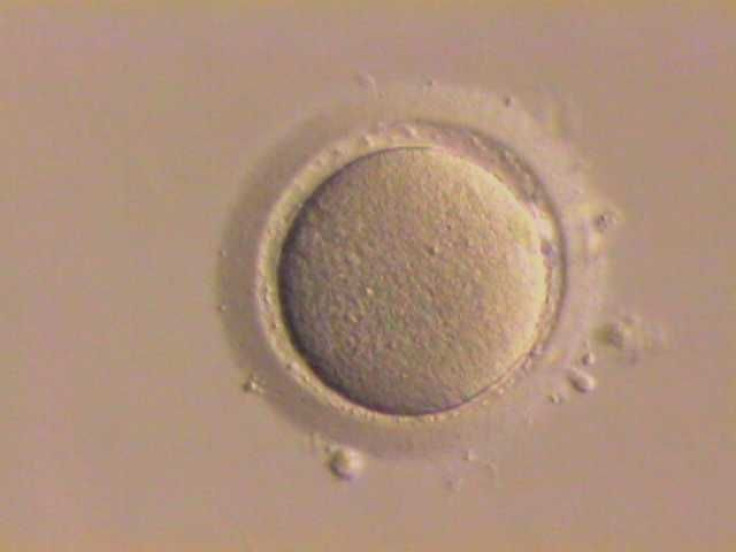Early-Onset Parkinson’s Linked To Missing DNA On Chromosome 22, Offering Chance For Earlier Detection

Although Parkinson’s disease is one of the most common neurodegenerative disorders worldwide, it typically affects people over the age of 65. Unfortunately, the reasons why some people develop the early-onset version of the disease, which may begin before age 50, has stumped scientists for some time. Now, Canadian scientists have found a link between a piece of DNA missing from chromosome 22 and early-onset Parkinson’s disease.
Chromosome 22
Sometimes a baby may be conceived with either too much or too little genetic material. In Down syndrome, a whole extra chromosome exists; in Turner syndrome, a whole missing chromosome exists (X). There are also situations where genetic material is rearranged. Whenever there is rearrangement or extra or missing genetic material, this generally leads to birth problems and learning differences. Humans normally have 46 chromosomes (23 pairs) in each cell. Chromosome 22 was the first human chromosome to be fully sequenced in 1999. Chromosome 22 is the second smallest chromosome, representing between 1.5 and 2 percent of the total DNA in cells.
When a person is born with about 50 genes missing on one chromosome 22, this is known as 22q11.2 deletion syndrome, which occurs in an estimated one in 2,000 to 4,000 births — relatively rare. So far, the syndrome has been fairly well-studied in childhood and adolescence, and many affected individuals have been known to develop heart or other birth defects, as well as learning or speech difficulties. Much less is known about its effects, though, as people age. Still, a few cases of patients with 22q11.2 deletion syndrome who also had Parkinson’s disease symptoms have been reported.
To researchers at the Dalglish Family Hearts and Minds Clinic at the University of Toronto, the world’s first clinic dedicated to adults with 22q11.2 deletion syndrome, this suggested a possible link between the two conditions. So they began studying 159 adults with the syndrome to discover how many had been clinically diagnosed with Parkinson’s disease. They also found three deceased individuals who had both the syndrome and Parkinson’s disease, and so the researchers performed post-mortem examinations of their brain tissue as well.
What did they discover? Despite the fact that all reported no family history of Parkinson’s disease and showed no known pathogenic mutations, the study subjects with 22q11.2 deletion syndrome had a significantly elevated occurrence of Parkinson's disease compared with standard population estimates.
“Our discovery that the 22q11.2 deletion syndrome is associated with Parkinson’s disease is very exciting,” Dr. Anthony Lang of the Krembil Neuroscience Centre of Toronto Western Hospital stated in a press release. “The varying pathology that we found is reminiscent of certain other genetic causes of Parkinson’s disease, and opens new directions to search for novel genes that could cause its more common form.”
Through their post-mortem examination, the researchers also discovered evidence that Parkinson’s disease combined with 22q11.2 deletion syndrome is associated with abnormal accumulations of a protein called Lewy bodies in the brain in some cases. The scientists also proved that the symptoms of Parkinson’s disease were not related to side effects of the medications commonly used to treat schizophrenia. Because patients with schizophrenia are often prescribed anti-psychotic medications, they may experience side effects such as tremors and muscle stiffness, similar to symptoms of Parkinson’s disease.
“Studies of patients with 22q11.2 deletion syndrome before they ever develop clinical features of Parkinson’s disease may not only provide important information on the effectiveness of screening methods for early detection of the disease, but also allow for future ‘neuroprotective treatments’ to be introduced at the ultimate time when they can have a chance to make an important impact on preventing the disease or slowing its course,” stated Lang in a press release.
“Most people with 22q11.2 deletion syndrome will not develop Parkinson’s disease,” Dr. Anne Bassett, director of Dalglish Family Hearts and Minds Clinic, stated in a press release. “But it does occur at a rate higher than in the general population.”
A progressive disorder, Parkinson's disease affects the nervous system and develops gradually, sometimes starting with a barely noticeable tremor in just one hand. The disorder also commonly causes stiffness or slowing of movement. Parkinson's disease symptoms worsen as the condition progresses over time. Although it cannot be cured, medications often markedly improve symptoms.
Source: Butcher NJ, Kiehl T-R, Hazrati LN, et al. Association Between Early-Onset Parkinson Disease and 22q11.2 Deletion SyndromeIdentification of a Novel Genetic Form of Parkinson Disease and Its Clinical Implications. JAMA Neurology. 2013.



























